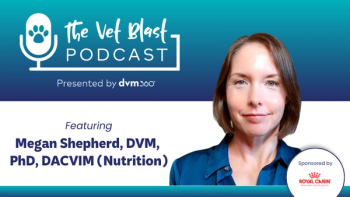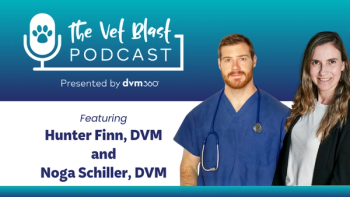
Looking back at Pet Mobility Awareness Month
Adam Christman, DVM, MBA, and Leilani Alvarez, DVM, DACVSMR, talk about all things joint health in this episode of The Vet Blast Podcast presented by dvm360, and sponsored by Virbac.
Sponsored by Virbac
Just because Pet Mobility Awareness Month is behind us, that does not mean that joint health is something that should not be talked about year round with clients. To get the conversation going outside of May, our host Adam Christman, DVM, MBA, welcomes Leilani Alvarez, DVM, DACVSMR, to The Vet Blast Podcast presented by dvm360, to talk about joint health, MOVOFLEX® Advanced Soft chews, and what veterinary professionals can do to help support joint health for their patients.
Below is a partial transcript, edited lightly for clarity
Adam Christman, DVM, MBA: What's one thing every veterinarian should do to support joint health proactively in all their canine patients?
Leilani Alvarez, DVM, DACVSMR: Number 1 thing and I would just say this ad nauseum, [is] weight management. If your dog is overweight, the most effective strategy is going to be weight management. The number one risk factor for development [in] dogs is obesity. And even just being 10% overweight, though, these dogs will still have a waistline. Most vets actually call them ideal body weight. But if they're a body condition score 6 out of 9, that will absolutely impact their clinical symptoms of OA, so that's for me absolutely number 1 is always weight management. But beyond that it's really about education. It's really about the entire team in a clinical setting participating and owner education. You know the vet's going to be busy and appointments going in and out of appointments treating their patients. The support staff can play a really important role in educating owners about the symptoms of, okay, we know OA is a degenerative disease, which means that the initial symptoms are not evident to most owners until the dog is much older. So recognizing that when that dog tears their ACL, once they recover from their TPLO, they may not be limping.
But guess what? They have OA because any time there is an injury to the joint, that's the start of a way and that's the time that you want to intervene. Start your supplementation, make sure you do activity modification to avoid that high impact activity, but make sure they stay active and still moving and walking on a daily basis.
Make sure that they're an ideal body weight. And so that educational aspect, I think is really, really important for prevention of, and nothing's going to stop the progression of, OA, but there's a lot of things that we can do to delay progression of OA. So weight management I would say number 1. And number 2 is really education. So that owners recognize that, oh I didn't know my dog had arthritis. Like it's a Rottweiler [who is] one year old. They tore their ACL. Guess what they have...?
Christman: Yes and I think the education should certainly go beyond the exam room, especially for National Mobility Month. I mean, talk about great, social media content pieces that all of you out there can do for your team. You know, look at some gait analysis that you see of dogs walking into your clinic or, you know, just sharing best practices of what works, what doesn't work. And to start that conversation ahead of time before they come in and maybe keep that top of mind when they're looking. You want to chat about mobility, for even their wellness, you know. So I think it's good.
Newsletter
From exam room tips to practice management insights, get trusted veterinary news delivered straight to your inbox—subscribe to dvm360.





